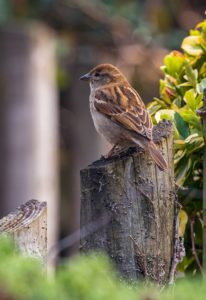Food safety risk from wild birds may be overestimated based on lack of science
 Photo Credit: Andy Holmes
Photo Credit: Andy Holmes
Tension between biodiversity conservation and risk management of foodborne pathogens in agriculture has increased since a major E. coli outbreak in spinach in 2006. Perceptions that link wildlife to food safety risks have formed in the absence of scientific evidence to support these fears and, in fact, there is a growing body of science that shows the opposite: that more biodiversity can actually reduce the risk of foodborne illnesses in agricultural landscapes. Unjustified management recommendations that aim to reduce wildlife have recently been called out by another study that highlights big gaps in our scientific knowledge of food safety risks in connection to wildlife. These gaps make it extremely challenging to justify management recommendations that suggest wildlife removal--particularly birds.
A literature review and meta-analysis published in Biological Reviews identified large knowledge gaps in research examining foodborne illness pathogen spillover from wild birds, and suggests that risk is overestimated. The study revealed that there is a large bias in the bird species that have been studied, with an emphasis on birds that are commonly near people like starlings and pigeons, or birds that commonly contact human waste like seagulls. The researchers estimate that 65% of North American bird species lack any scientific measurements of pathogen presence. Because of this, there is not enough scientific evidence to properly estimate the risk of pathogen spillover from wild birds, nor make management recommendations based on current science. Perhaps the most important science that is missing is research on how much bacteria can be spread by fecal matter and how long that bacteria survives in the field. Without this information, it is impossible to calculate risk of disease spread to humans, particularly in agricultural settings. The authors of this study make a call for more research to fill in these gaps to help design more appropriate wildlife management recommendations.



